3권 1호

초록
Among the 13 species of otters in the world, only one Eurasian otter (Lutra lutr) is found in South Korea. In the Korean Peninsula, otter pelts were historically valuable and expensive commodities used for international trade, and otters have long been poached as hunting animals. Recent rapid economic development in South Korea has increased habitat fragmentation and loss, creating a continuing threat to the natural environment. Otters live only in the area of rivers and streams as a family group and are territorial (linear habitat). Due to these limited conditions of otter habitat, the population size of otter is lower than that of onshore mammals. According to recent research, DNA analyses using microsatellite markers have shown that only approximately 7-21 otter individuals inhabit river systems for a length of 50-230 km. Korea's urban streams are associated with many threats that hinder otters from inhabiting them. Many areas around the urban streams are surrounded by high concrete riverbanks, and the risk of roadkill is also high. Nevertheless, ecological restoration projects in the urban rivers will contribute greatly to the stable inhabitation of otters. Detailed otter conservation strategies, such as the elimination of threat factors, improvement of habitat environment, and restoration of food resources and shelter, will provide a positive restoration effect on otter and river ecosystems as well.
Abstract
Among the 13 species of otters in the world, only one Eurasian otter (Lutra lutr) is found in South Korea. In the Korean Peninsula, otter pelts were historically valuable and expensive commodities used for international trade, and otters have long been poached as hunting animals. Recent rapid economic development in South Korea has increased habitat fragmentation and loss, creating a continuing threat to the natural environment. Otters live only in the area of rivers and streams as a family group and are territorial (linear habitat). Due to these limited conditions of otter habitat, the population size of otter is lower than that of onshore mammals. According to recent research, DNA analyses using microsatellite markers have shown that only approximately 7-21 otter individuals inhabit river systems for a length of 50-230 km. Korea's urban streams are associated with many threats that hinder otters from inhabiting them. Many areas around the urban streams are surrounded by high concrete riverbanks, and the risk of roadkill is also high. Nevertheless, ecological restoration projects in the urban rivers will contribute greatly to the stable inhabitation of otters. Detailed otter conservation strategies, such as the elimination of threat factors, improvement of habitat environment, and restoration of food resources and shelter, will provide a positive restoration effect on otter and river ecosystems as well.


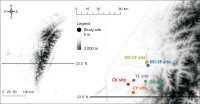
초록
Farming practices that balance environmental friendliness with biodiversity are increasingly valuable. Wild plants on farmlands compete for nutrients with crops and create a crucial microhabitat and resources for animals such as natural enemies. Investigating farmlands and their surrounding plants with limited human and material resources has become an essential aspect of evaluating the agricultural ecosystem services. This study investigated plants in six agricultural long-term ecological research sites in Taiwan from 2017 to 2020 to determine the ideal season for investigation. Cluster analysis was performed to group habitats with similar plant composition, and the species–area curves of the clusters in each season were created. The results indicated that the agricultural ecosystem could be divided into farmlands, banks, orchards, and tea gardens. The habitats were divided into farmland, bank, Chia-Yi orchard, Gu-Keng orchard, and tea garden clusters. Ground plant cover can be investigated all year with at least 18 quadrats. However, if human and material resources are limited, 10 quadrats should be the minimum for farmlands in autumn and for the other microhabitats in spring. The minimum number of quadrats is 10 for banks, 17 for orchards, and 9 for tea gardens.
Abstract
Farming practices that balance environmental friendliness with biodiversity are increasingly valuable. Wild plants on farmlands compete for nutrients with crops and create a crucial microhabitat and resources for animals such as natural enemies. Investigating farmlands and their surrounding plants with limited human and material resources has become an essential aspect of evaluating the agricultural ecosystem services. This study investigated plants in six agricultural long-term ecological research sites in Taiwan from 2017 to 2020 to determine the ideal season for investigation. Cluster analysis was performed to group habitats with similar plant composition, and the species–area curves of the clusters in each season were created. The results indicated that the agricultural ecosystem could be divided into farmlands, banks, orchards, and tea gardens. The habitats were divided into farmland, bank, Chia-Yi orchard, Gu-Keng orchard, and tea garden clusters. Ground plant cover can be investigated all year with at least 18 quadrats. However, if human and material resources are limited, 10 quadrats should be the minimum for farmlands in autumn and for the other microhabitats in spring. The minimum number of quadrats is 10 for banks, 17 for orchards, and 9 for tea gardens.


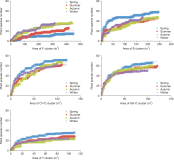

초록
In this study, we investigated the water quality and fish community of the Gudam Wetland, a riverine wetland in the middle-upper reaches of the Nakdong River, during March-October 2020. The main results were as follows: average annual flow rate: 45.0±23.7 m3/s, flow velocity: 0.4±0.3 m/s, water depth: 1.4±0.4 m, water temperature: 17.5±0.8°C, pH: 7.8±0.2, electrical conductivity: 121.6±19.0 µs/cm, dissolved oxygen concentration: 11.4±0.9 mg/L, suspended solids concentration: 3.8±2.0 mg/L, and the water quality was classified as Ia (very good). A total of 754 individual fish belonging to 4 orders, 7 families, and 19 species were investigated. Cyprinidae was the dominant group, with 13 species. The dominant species was Zacco platypus (39.3%), followed by Pseudogobio esocinus (17.5%). There were 8 (42.1%) endemic Korean species and 1 exotic species, Micropterus salmoides. Four species were carnivores, six were insectivores, and nine were omnivores. Regarding tolerance to environmental changes, 6 species were tolerant, 11 had intermediate tolerance, and 2 were sensitive. Fish community analysis revealed dominance of 0.57, diversity of 2.04, evenness of 0.69, and richness of 2.72, indicating a diverse and stable fish community. The fish assessment index showed that the assessment class was B (average 62.5), which was higher than that of major streams of the Nakdong River (class C). For sustainable conservation of the Gudam Wetland, management strategies such as minimizing aggregate collection and preventing inflow of non-point pollutants are required.
Abstract
In this study, we investigated the water quality and fish community of the Gudam Wetland, a riverine wetland in the middle-upper reaches of the Nakdong River, during March-October 2020. The main results were as follows: average annual flow rate: 45.0±23.7 m3/s, flow velocity: 0.4±0.3 m/s, water depth: 1.4±0.4 m, water temperature: 17.5±0.8°C, pH: 7.8±0.2, electrical conductivity: 121.6±19.0 µs/cm, dissolved oxygen concentration: 11.4±0.9 mg/L, suspended solids concentration: 3.8±2.0 mg/L, and the water quality was classified as Ia (very good). A total of 754 individual fish belonging to 4 orders, 7 families, and 19 species were investigated. Cyprinidae was the dominant group, with 13 species. The dominant species was Zacco platypus (39.3%), followed by Pseudogobio esocinus (17.5%). There were 8 (42.1%) endemic Korean species and 1 exotic species, Micropterus salmoides. Four species were carnivores, six were insectivores, and nine were omnivores. Regarding tolerance to environmental changes, 6 species were tolerant, 11 had intermediate tolerance, and 2 were sensitive. Fish community analysis revealed dominance of 0.57, diversity of 2.04, evenness of 0.69, and richness of 2.72, indicating a diverse and stable fish community. The fish assessment index showed that the assessment class was B (average 62.5), which was higher than that of major streams of the Nakdong River (class C). For sustainable conservation of the Gudam Wetland, management strategies such as minimizing aggregate collection and preventing inflow of non-point pollutants are required.


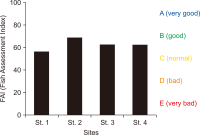

초록
The analysis of seven islands in Gogunsan archipelago, Korea with insect fauna and vascular plant flora was carried out based on a field survey conducted in May, July, and September. As a result, a total of 2,817 insect individuals including 264 species and 315 taxa of vascular plant were recorded. Bangchukdo the largest island among the seven islands showed the largest number both insect species and plant taxa. The similarity analysis suggested that the nearness of each island strongly affected the insect fauna and vascular plant flora on each island. In addition, there was significant correlation between the areas of each island and the numbers of insect species (Spearman’s correlation coefficient=0.857, P-value=0.014). In the future, the results of this study can be used as data related to island ecology and conservation.
Abstract
The analysis of seven islands in Gogunsan archipelago, Korea with insect fauna and vascular plant flora was carried out based on a field survey conducted in May, July, and September. As a result, a total of 2,817 insect individuals including 264 species and 315 taxa of vascular plant were recorded. Bangchukdo the largest island among the seven islands showed the largest number both insect species and plant taxa. The similarity analysis suggested that the nearness of each island strongly affected the insect fauna and vascular plant flora on each island. In addition, there was significant correlation between the areas of each island and the numbers of insect species (Spearman’s correlation coefficient=0.857, P-value=0.014). In the future, the results of this study can be used as data related to island ecology and conservation.



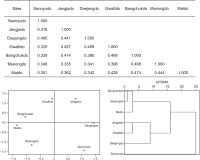
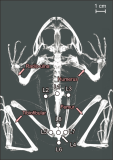
초록
The trade-off between morphology and physical function may vary according to ecological traits. Taking a quantitative approach, we attempted to analyze the differences in the skeletal shape of the lower body and limbs in relation to the ecological traits of four anuran species (Dryophytes japonicas, Glandirana rugose, Pelophylax nigromaculatus, and Lithobates catesbeianus) occurring in South Korea. Body size, locomotor mode, microhabitat, trophic positions, and predator defense mechanisms were selected for the ecological traits of the anurans. The pelvis, ilium, and urostyle, which are associated with locomotor performance, were selected for the skeletal shape of the lower body. The ratio of limbs, which is related to locomotor mode and microhabitat, was confirmed by analyzing the skeletons of the forelimbs (radio-ulnar and humerus) and hindlimbs (femur and tibiofibular). Both landmark-based geometric morphometrics and traditional methods were used for skeletal shape comparison. The skeletal shape of the lower body was completely different among the four species, whereas the ratio of the limbs was only different in D. japonicas. The skeletal shape of the lower body may be related to body mass and predator defense mechanisms, whereas the ratio of the limbs was related to the locomotor mode and microhabitat. Quantifying these morphological differences among various species can help elucidate the mechanisms of behavioral and morphological changes in response to ecological effects.
Abstract
The trade-off between morphology and physical function may vary according to ecological traits. Taking a quantitative approach, we attempted to analyze the differences in the skeletal shape of the lower body and limbs in relation to the ecological traits of four anuran species (Dryophytes japonicas, Glandirana rugose, Pelophylax nigromaculatus, and Lithobates catesbeianus) occurring in South Korea. Body size, locomotor mode, microhabitat, trophic positions, and predator defense mechanisms were selected for the ecological traits of the anurans. The pelvis, ilium, and urostyle, which are associated with locomotor performance, were selected for the skeletal shape of the lower body. The ratio of limbs, which is related to locomotor mode and microhabitat, was confirmed by analyzing the skeletons of the forelimbs (radio-ulnar and humerus) and hindlimbs (femur and tibiofibular). Both landmark-based geometric morphometrics and traditional methods were used for skeletal shape comparison. The skeletal shape of the lower body was completely different among the four species, whereas the ratio of the limbs was only different in D. japonicas. The skeletal shape of the lower body may be related to body mass and predator defense mechanisms, whereas the ratio of the limbs was related to the locomotor mode and microhabitat. Quantifying these morphological differences among various species can help elucidate the mechanisms of behavioral and morphological changes in response to ecological effects.

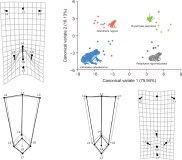
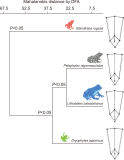

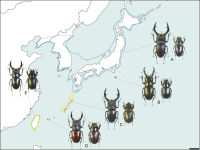
초록
Psalidoremus is one of the subgenus which consists of five species and eleven subspecies through Taiwan, Japan, Korea and north eastern part of China which present strong endemism to their distribution. While most of advance studies focus on the new species or subspecies from this taxon, this paper suggests paleogeographical assumption and hypothesis of how they diverged from common ancestors. Phylogeographical patterns illustrated by the distribution of five species, which including Prosopocoilus inclinatus, Prosopocoilus hachijoensis, Prosopocoilus dissimilis, Prospocoilus pseudodissimilis, Prosopocoilus motschulskii respectively, has been assessed in this research. Speciation history is suggested by morphological tendencies especially in male mandibles with assumption from geographical patterns of under sea level.
Abstract
Psalidoremus is one of the subgenus which consists of five species and eleven subspecies through Taiwan, Japan, Korea and north eastern part of China which present strong endemism to their distribution. While most of advance studies focus on the new species or subspecies from this taxon, this paper suggests paleogeographical assumption and hypothesis of how they diverged from common ancestors. Phylogeographical patterns illustrated by the distribution of five species, which including Prosopocoilus inclinatus, Prosopocoilus hachijoensis, Prosopocoilus dissimilis, Prospocoilus pseudodissimilis, Prosopocoilus motschulskii respectively, has been assessed in this research. Speciation history is suggested by morphological tendencies especially in male mandibles with assumption from geographical patterns of under sea level.

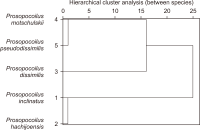
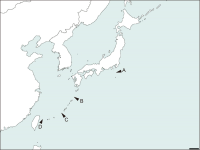
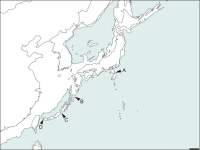
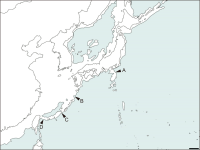
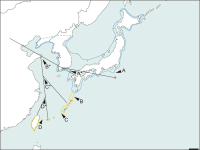

초록
The escape behavior of prey fish to predator attack is directly linked to the survival of the fish. In this study, I explored the escape behavior of Medaka fish to bird attacks. To simulate the attack, I designed a model triangular-shaped bird to slide along a fishing line connected between rods at both ends of the tank. The triangular shape was set to 10×15 (S=1), 15×20 (S=2), and 20×25 cm (S=3) with base×height. The slope (θ) of the fishing line, which determines the attack speed of the model bird, was set to values of 15° (θ=1), 30° (θ=2), and 45° (θ=3). The escape behavior was characterized using five variables: escape speed (v), escape acceleration (α), responsiveness (γ), branch length similarity entropy (ε), and alignment (φ). The experimental results showed when (S, θ)=(fixed, varied), the change in values of the five variables were not significant. Thus, the fish respond more sensitively to S than to θ In contrast, when (S, θ)=(varied, fixed), v, α, and γ showed increasing trends but ε and φ did not change much. This indicates the nature of fish escape behavior irrespective of the threat is inherent in ε and φ. I found that fish escape behavior can be divided into two types for the five physical quantities. In particular, the analysis showed that the type was mainly determined by the size of the model bird.
Abstract
The escape behavior of prey fish to predator attack is directly linked to the survival of the fish. In this study, I explored the escape behavior of Medaka fish to bird attacks. To simulate the attack, I designed a model triangular-shaped bird to slide along a fishing line connected between rods at both ends of the tank. The triangular shape was set to 10×15 (S=1), 15×20 (S=2), and 20×25 cm (S=3) with base×height. The slope (θ) of the fishing line, which determines the attack speed of the model bird, was set to values of 15° (θ=1), 30° (θ=2), and 45° (θ=3). The escape behavior was characterized using five variables: escape speed (v), escape acceleration (α), responsiveness (γ), branch length similarity entropy (ε), and alignment (φ). The experimental results showed when (S, θ)=(fixed, varied), the change in values of the five variables were not significant. Thus, the fish respond more sensitively to S than to θ In contrast, when (S, θ)=(varied, fixed), v, α, and γ showed increasing trends but ε and φ did not change much. This indicates the nature of fish escape behavior irrespective of the threat is inherent in ε and φ. I found that fish escape behavior can be divided into two types for the five physical quantities. In particular, the analysis showed that the type was mainly determined by the size of the model bird.


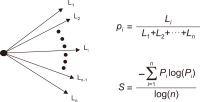
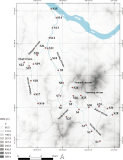
초록
Species distribution models are a useful tool for predicting future distribution and establishing a preemptive response of invasive species. However, few studies considered the possibility of habitat for the aquatic organism and the number of target sites was relatively small compared to the area. Environmental DNA (eDNA) is the emerging tool as the methodology obtaining the bulk of species presence data with high detectability. Thus, this study applied eDNA survey results of Micropterus salmoides and Lepomis macrochirus to species distribution modeling by seasons in the Anyang stream network. Maximum Entropy (MaxEnt) model evaluated that both species extended potential distribution area in October compared to July from 89.1% (12,110,675 m2) to 99.3% (13,625,525 m2) for M. salmoides and 76.6% (10,407,350 m2) to 100% (13,724,225 m2) for L. macrochirus. The prediction value by streams was varied according to species and seasons. Also, models elucidate the significant environmental variables which affect the distribution by seasons and species. Our results identified the potential of eDNA methodology as a way to retrieve species data effectively and use data for building a model.
Abstract
Species distribution models are a useful tool for predicting future distribution and establishing a preemptive response of invasive species. However, few studies considered the possibility of habitat for the aquatic organism and the number of target sites was relatively small compared to the area. Environmental DNA (eDNA) is the emerging tool as the methodology obtaining the bulk of species presence data with high detectability. Thus, this study applied eDNA survey results of Micropterus salmoides and Lepomis macrochirus to species distribution modeling by seasons in the Anyang stream network. Maximum Entropy (MaxEnt) model evaluated that both species extended potential distribution area in October compared to July from 89.1% (12,110,675 m2) to 99.3% (13,625,525 m2) for M. salmoides and 76.6% (10,407,350 m2) to 100% (13,724,225 m2) for L. macrochirus. The prediction value by streams was varied according to species and seasons. Also, models elucidate the significant environmental variables which affect the distribution by seasons and species. Our results identified the potential of eDNA methodology as a way to retrieve species data effectively and use data for building a model.

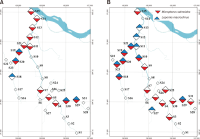

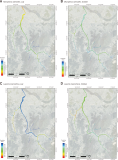
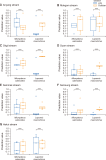

_학술지_디자인_시안_koar_top_300x55.png)
